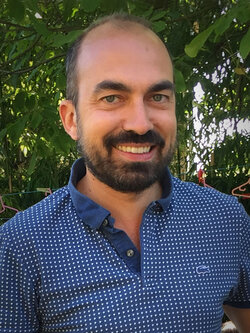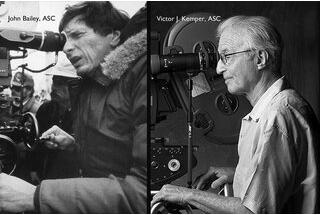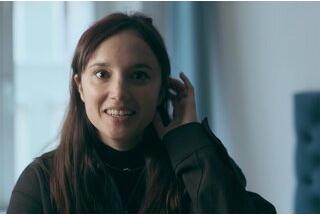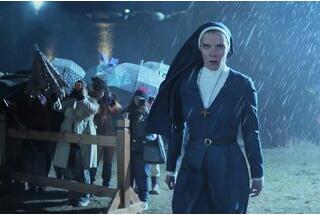Julien Poupard, AFC, discusses his cinematographic work on "Les Amandiers", by Valeria Bruni Tedeschi
So, I did iconographic research on the 1980s and I chose the aesthetic accidents that I liked, the accidents that made it possible to tell Valeria’s story in a way that would be “more true than truth”, which is also a question of transmission. We looked for a mixture, a somewhat “post-modern” form in the sense that it was a question of reinventing the past through the eyes of the present, of very freely shifting between past and present.
I really like this theory of the accident, of the unexpected as a principle of creation. Serendipity! Like for example the post-it, which was born from an engineer’s failed experiment. He was researching adhesives and came up with a glue with poor adhesive qualities. A few years later, his colleague invented the concept of the Post-it.
It’s like a state of mind: "knowing how to welcome the accident".
Fairly early on, Valeria spoke to me about Panic in Needle Park, by Jerry Schatzberg. A magnificent film on a neighborhood of drug addicts in New York starring Al Pacino. It’s incredibly true. The film alternates between medium focal lengths to be close to the actors and very long focal lengths to mix the actors with the actual drug addicts of the neighborhood.
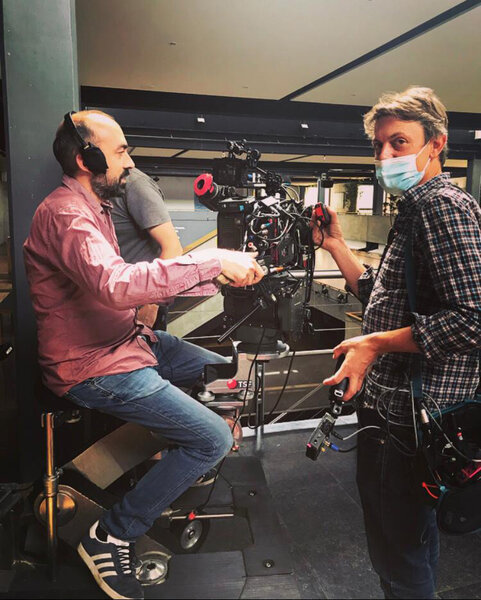
Screen Tests #1
First trials (three months before shooting). I prepared an initial moodboard, which was a little chaotic. Valeria wanted to shoot on film for aesthetic reasons, but the shooting method of her most recent films lends itself more to digital (length of takes, filming rehearsals, lots of dailies). For my part, I’m more in favor of digital with vintage lenses. In keeping with this idea of bringing a form of modernity to this story.
When we’d just located the main location of the film, set in the theater in Les Amandiers, which will in fact be shot in the theater at Créteil. I took this opportunity to spend a day with an Alexa, an S16 camera and several still cameras. I put the Alexa and the S16 mm side by side (the 500T pushed by 1 and 2 f-stops). I took pictures on Cinestill 500 and Kodak Gold 200.
Yov Moor, the colorist, and I, spent a whole day on these tests. We first worked on the texture of the image before the color; the blur, the definition, the grain…
Then the contrast. And then the color. I had taken care to film different lighting atmospheres. Especially for the color. The colors had to be refined. Then, we worked on spatial transformations. The halations (the red outlines in the highlights) are very interesting in the Cinestill photos. And then the grain.
We screened these blind tests at Max Linder. No one could see a stark difference between the S16 and the digital. Valéria is delighted, and forgot about the S16. That pushed me to go even further in my search for gaining the support of accidents. We chose the film accidents that we liked. On the other hand, I still feel there are problems rendering skin color. The color separation isn’t great and that’s got to be addressed.
I also think that we would never have gone so far in the final image if we hadn’t had the Super 16 as a reference to push the digital material.
Rehearsals
Valeria, when I first met her, wanted me to film the rehearsals, this was very important to her. I spent five weeks filming the actors. I observed the bond being woven between Valeria and her actors. And then I also entered the dance. I started to look at them first, to observe the bodies, I was quite distant at first. Then I started to develop intimacy with everyone. When things got tough, some came to confide in me. Valeria welcomed me into that role and wanted me to have that involvement. It helps to better get to know each actor. We come to understand who works on their performance and who acts more instinctively. Nadia was at ease in the work, from take to take her game improved. Sofiane is more instinctive, and we felt that we had to save the first takes. I also filmed from time to time with my phone. And as though it were nothing, I started cutting.
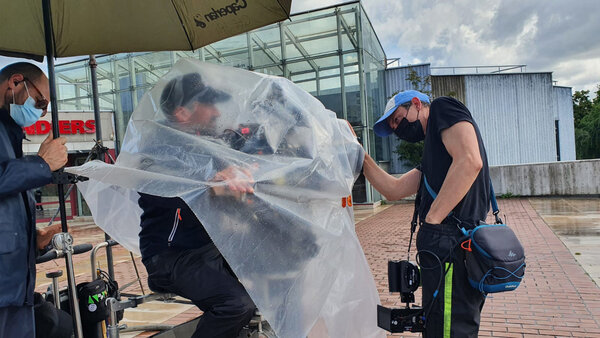
Essays #2
Still on set, this time with all the actors and Valeria.
We copied 16 mm on the first tests, but then we had to "go beyond" it and identify this film’s specific image. I focused on the Kodachrome photographs which are those of my youth. For me, those photographs evoke the 1980s, with their accidents and the visible influence of the filmstock itself. Sometimes they had color shifts that we did not fully control: accidents!
During color timing of the tests, we took our different layers and tested a filmbox LUT which gave us a color reproduction close to what we were looking for. The approach was empirical, and I really had the feeling I was building the image step by step.
At the end of the screening of the tests, we discussed them with the set designer, Emmanuelle, and the costume designer, which colors that we wished to bring out. Especially the reds and yellows, the colors that draw attention to the movement of the young people.
Trials #3
This time we tested the costumes and the make-up as well as the paintings for certain sets. And we refined our LUT settings.
I want to thank the production manager, Marianne Germain, and the producers, Alexandra Henochberg and Patrick Sobelman. During all these tests, they never once mentioned money and they followed, step by step, the making of the image with great interest.
Cutting and shooting
During the rehearsals, with Valeria and Caroline Deruas, the script supervisor, we discussed how to break down the scenes at length. For each scene, we started with the actors, we first looked for the right "note" for the scene and then we talked about how to break it down.
I wanted to make a film with the freedom of a handheld camera but with a dolly and a zoom. For that, I would like to thank my key grip, Alexandre Chapelard, who is very talented in dolly improvisation.
I mainly used an Angénieux 25-250 HR zoom on a dolly. Sometimes handheld with a Zeiss GO series.
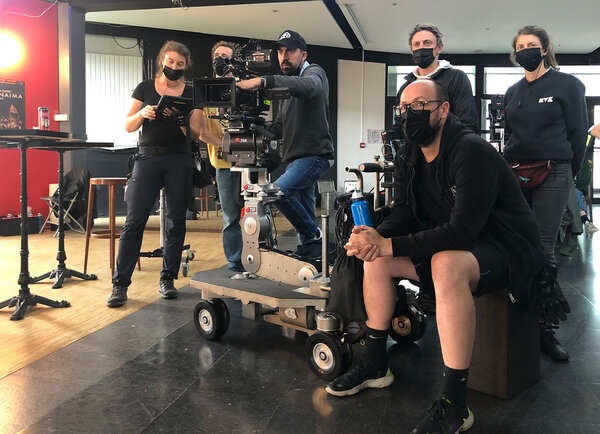
While preparing the film, I came across an interview with Chéreau who said: “The camera should not follow the actors; it should pursue them…” I used the zoom a lot to fabricate accidents. The zoom was like a loving gesture by which the cameraman inhabits the take by choosing to focus on a detail or a face...
To film Chéreau, who is very mysterious in the script and a little hard to access for young actors, we had the idea of filming him always from afar in long focal length, always a little hidden and elusive.
And then Chéreau’s maxim, which Valeria and I repeated daily on set. It was like our metronome to help us find the right note: “No Transcendence without transgression. »

Grading
I told Yov a story: on set, when I received the first stills on my phone, I was surprised by the ultra-contrasted and very saturated image. Valeria loved it. I see the first dailies and I notice a problem, the lab has accidentally applied a Rec709 LUT in addition to our LUT. Obviously that does not comport with the animated image. While I was telling him this, Yov applied the 709 to the first few frames without telling me and, indeed, there was something interesting there. It was too strong, but we dosed it appropriately and it added an accident to the color which made it more vibrant and shifting in unexpected places. It had a particular effect on the very photogenic greens. We liked the accident and we kept it throughout the film, but we dosed it for each scene.
I take this opportunity to warmly thank Jonathan Ricquebourg, who filled in for me on the New York exteriors and some retakes in Créteil.
Thanks to the actors, Nadia, Sofiane, Clara, Léna, Liv, Sarah, Suzanne, Eva, Alexia, Baptiste, Oscar, Vassili, Noham, Micha and Louis. I absolutely loved filming you, following your fears, your doubts, your emotions, your follies. I felt so privileged to witness all of this.
Thanks to Valeria, for this film and for the place you offered me.
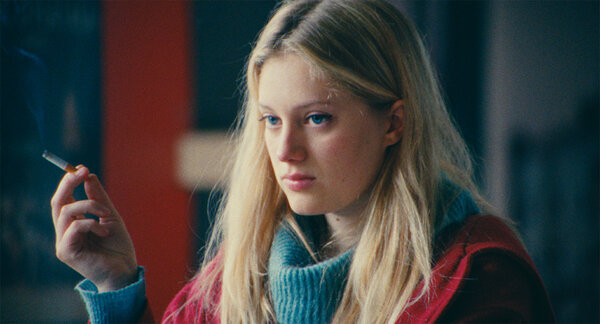
In the late 1980s, Stella, Étienne, Adèle and the whole troupe were twenty years old. They pass the entrance examination for the famous school created by Patrice Chéreau and Pierre Romans at the Amandiers theater in Nanterre. Catapulted at full speed into life, passion, games, love, together they will live the turning point of their lives but also their first great tragedies.
(Translated from French by A. Baron-Raiffe)
 En
En
 Fr
Fr